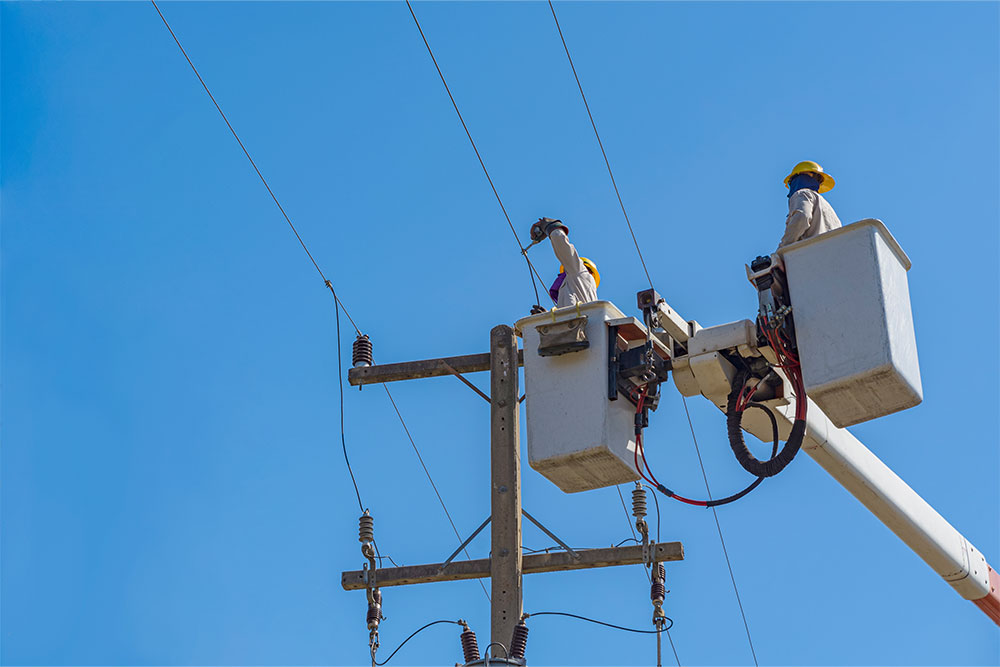Enhancing Utility Pole Maintenance and Inspection
Close to 90% of power outages in the United States occur because of a disruption in the power distribution system caused by harsh weather conditions. For instance, in 2017, Hurricane Harvey wreaked havoc, damaging over 5200 utility poles in its wake. The result – over 200,000 people were left stranded without power for two weeks! Storms and inclement weather conditions have caused incalculable damage to utility infrastructure and continue to disrupt life every time there is an impact on the distribution system.
In this large and complex power transmission and distribution system, utility poles play a fundamental role.
That’s what we will talk about in this post. What is the significance of the utility pole, why it’s so crucial that pole inspection and maintenance is top-notch, and how important it is for utility companies to gather and efficiently manage inspection data from the field!
The Humble Utility Pole
Yes, we probably take it for granted as we drive by the thousands of utility poles lining roads and freeways. Yet each pole is an indispensable unit of the more extensive power transmission and distribution network, making it possible for us to access electricity at the flick of a switch. Utility poles are of several types, depending on the function they perform. Very broadly, transmission poles carry high voltage power to substations where the power is converted to low voltage electricity, and from here, distribution poles transmit this low voltage power. Right through the process, utility poles form the very building blocks of this vast power management network!
Regular Inspections – Key to proactive and reactive maintenance
Routine inspection is vital. Research shows that utility poles can get damaged from various causes, including storms and lightning, earthquakes, destruction by wild animals, vehicle accidents, or even falling trees. Companies that manage massive infrastructure networks need to constantly keep an eye on the fitness of these assets, which are exposed to these many threats. This “proactive” inspection can help address issues before they occur or handle a problem while it is still in an emergent stage and prevent it from blowing up into a crisis. Inspections help prevent downtime, reduce the possibility of mishaps and accidents, and help utility companies reduce maintenance costs by being more efficient.
Inspections also become urgent and critical when there is a reported issue, and they are “reactive” in nature. Inspections give management teams insight into recurring trends and help them plan and make decisions for optimum efficiency. Then, of course, there is also the issue of safety and compliance. Inspections conducted meticulously help corporations ensure safety and enable them to stay on the right side of the law through consistent compliance.
Traditional Pole Inspection
Utility poles are often made of wood, steel, or concrete and carry the allocated equipment needed at the top; this can significantly vary in weight. These variables make poles complex to manage, especially their testing, safety checks, and resilience prediction.
Data Collection
Traditionally such inspections are conducted manually. Many believe that manual field data collection, which has been the established practice for decades, is the most reliable and accurate way.
But collecting and managing this vast amount of inspection data can pose specific challenges. Inspections capture many details, like pole tag details, pole measurements, strength tests, leaning issues, cross arms condition, parts replacement, underground damage, primary and secondary wire condition, etc.
What happens when this data is gathered and managed manually at scale?
Manual Data Management
Think handwritten forms, thousands of sheets of paper, and the back-office processes needed to transcribe all this data. No points for guessing the humungous issues with the manual field data capture. Here are just some:
- Accuracy issues while documenting readings
- Capturing and managing notes, photos, video footage
- Indecipherable handwriting
- Reading the manually written data wrong
- Losing the data sheets and checklists
- And of course, the time it takes to put all this together; research shows that on average, at the back office, it takes over 40 minutes to transcribe the captured data for a single pole. Imagine that across thousands of poles, and you get an idea of the redundancy and inefficiency of the whole process.
Bottom line – it’s tedious, it’s inaccurate, it’s expensive, and it’s anything but real-time! Furthermore, the manual process increases the per pole cost of inspection and only piles up the tons of unprocessed data day by day as back-office teams play catch up.
The Digital way
Now let’s look at this whole thing flipped over! Automated field data capture!
- Accuracy – For one thing, it removes the many human error possibilities, ensuring much better data capture accuracy.
- Speed – With no back-office processing, the captured data becomes immediate and real-time.
- Insight – With key metrics available, managers can plan resources better, address bottlenecks, plan staff allocation and improve response time.
- Cost Savings – With a significant reduction in data capture and processing costs, the organization has potential financial bandwidth for more mission-critical investments.
With a uniform system in place, data collection, processing, and reporting become seamless and significantly more efficient.
Fielda’s Mobile Data Collection App
Here’s how the Fielda Mobile Field Data Collection App makes inspections management a breeze for operations managers:
Fielda enables digital data capture with customizable forms, fields, checklists, and workflows, so you configure your data collection just the way you need it.
- The proprietary GIS maps help you visualize, plan, design, and gather data from your field assets in real-time.
- Offline data capture enables field staff to record information from remote locations even when completely off the grid.
- Through comprehensive reports and analytics, Insight and Intelligence enable optimized operations, streamlined processes, lowered costs, and mitigated risks.
It’s the field data collection of the future!
Click here to try Fielda for free. You can download from App Store or Play Store.
